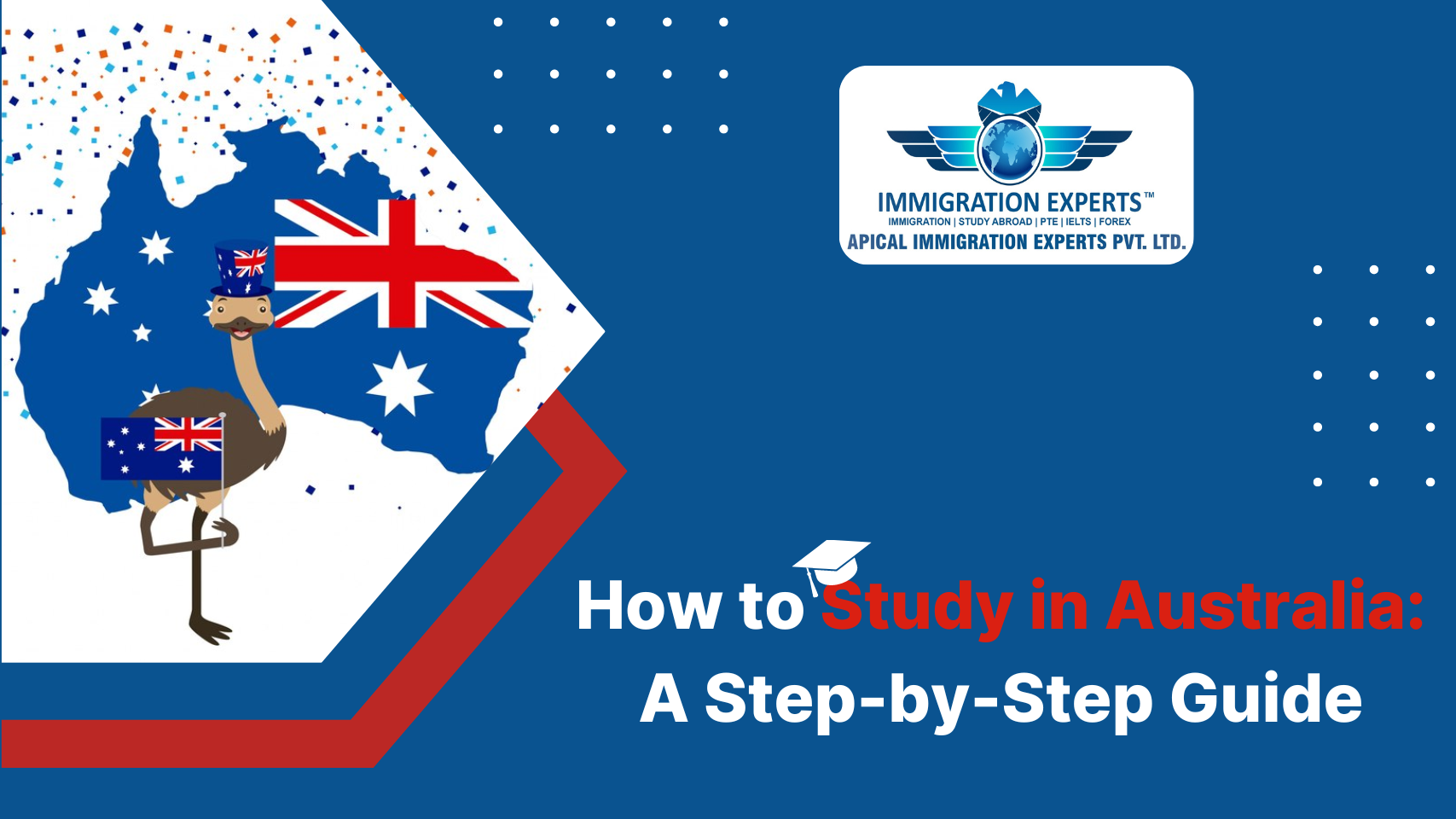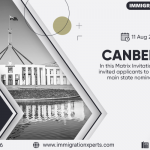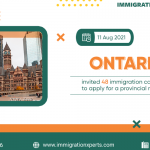Australia has become one of the most sought-after destinations for international students. With world-class universities, multicultural campuses, and excellent lifestyle opportunities, studying in Australia can be a life-changing experience.
However, planning your journey to study abroad can be challenging without the right guidance. This step-by-step guide will help you navigate the process, from choosing the right course to settling in Australia.
Understanding the Australian Education System for International Students
Step 1: Research Your Study Options
The first and most crucial step is to research your study options. Australia offers a wide range of courses across universities, vocational education, and English language programs. Before making any decisions, ask yourself:
- What is my field of interest?
- Do I want an undergraduate, postgraduate, or vocational program?
- Which city suits my lifestyle and budget?
Cities like Sydney and Melbourne are bustling with opportunities but come with higher living costs, whereas Brisbane and Adelaide may offer a more affordable lifestyle. Additionally, check university rankings, course content, and internship opportunities. Choosing the right course ensures you gain the skills necessary for your future career.
Original insight: Don’t just focus on university rankings. Look for courses with practical exposure or industry tie-ups. Australian universities often provide internships, work placements, and industry projects, which can be crucial for post-study work opportunities.
Step 2: Understand the Admission Requirements
Each Australian university has its own admission requirements. Generally, these include:
- Academic transcripts and certificates
- English language proficiency scores (IELTS, PTE, or TOEFL)
- Statement of Purpose (SOP) or personal essay
- Letters of recommendation (for some programs)
English proficiency is a significant factor, as most courses are taught in English. Make sure you prepare and give yourself enough time to achieve the required scores. Some universities may also have additional requirements for specific programs, such as portfolios for design courses or interviews for professional courses.
Original insight: If you are slightly below the required English score, many universities offer pathway programs or foundation courses. These courses help you improve your language skills while gradually adjusting to the Australian academic environment.
Step 3: Choose the Right University and Course
Once you understand the requirements, shortlist universities that match your preferences. Consider:
- Course duration
- Tuition fees
- Scholarship opportunities
- Campus facilities
- Student support services
Australia is home to several prestigious universities, such as the University of Melbourne, Australian National University, and University of Sydney. But don’t ignore smaller universities or regional institutions—they often provide more personalized attention and can be more budget-friendly.
Original insight: Regional universities often give you an advantage when applying for post-study work visas. Some programs also allow students to combine studies with part-time work more easily, enhancing both experience and income.
Step 4: Apply for Your Course
Applying to an Australian university is a straightforward process but requires careful attention to detail. Most universities have online application portals where you need to submit your documents. Tips for a successful application:
- Submit your documents well before deadlines.
- Double-check transcripts, certificates, and test scores.
- Tailor your SOP to reflect your goals and motivation for studying in Australia.
- Seek professional guidance if needed to strengthen your application.
Original insight: A well-written SOP can make a significant difference. Highlight your achievements, career goals, and why Australia is the ideal destination. Personal stories and genuine motivation often stand out to admission officers.
Step 5: Apply for a Student Visa
After receiving your admission offer, the next step is the student visa (subclass 500). Requirements typically include:
- Confirmation of Enrollment (CoE) from your university
- Proof of sufficient funds to cover tuition and living costs
- English proficiency test scores
- Health insurance (Overseas Student Health Cover, OSHC)
- Character and health checks
Visa processing times vary, so apply early. Make sure your passport and documents are valid and complete to avoid delays.
Original insight: Keep a backup of all documents digitally. Missing or misplaced documents can delay visa approval. Also, prepare a financial plan showing how you will manage tuition, accommodation, and daily expenses—it strengthens your visa application.
Step 6: Plan Your Finances
Studying in Australia can be expensive, so financial planning is key. Consider:
- Tuition fees (varies by course and university)
- Living expenses (rent, groceries, transport, and leisure)
- Health insurance costs
- Travel and contingency funds
Scholarships, part-time jobs, and student loans can ease the financial burden. Australia allows international students to work up to 40 hours per fortnight during study periods, which can help with living expenses and gaining work experience.
Original insight: Opening an Australian bank account before arrival can simplify your financial management. Some banks even offer student-friendly accounts with no fees or overdraft charges.
Step 7: Accommodation and Pre-Departure Preparation
Deciding where to live is crucial for a smooth transition. Options include:
- On-campus dormitories
- Shared apartments
- Homestays with Australian families
Start searching early to get the best options. Additionally, arrange for travel, health insurance, and mobile connectivity. Familiarize yourself with local laws, culture, and transportation systems.
Original insight: Join university online forums and social media groups before arrival. Connecting with current students provides practical tips on the best neighbourhoods, part-time job opportunities, and cultural adaptation.
Step 8: Arrival and Settling In
Upon arrival, focus on:
- Attending university orientation sessions
- Registering with local authorities (if required)
- Activating bank accounts and SIM cards
- Exploring the city and local amenities
Balancing academics, social life, and work is essential. Australia is welcoming to international students, but cultural adjustment may take time.
Original insight: Start networking early. Attend student club events, workshops, and career fairs. Building a professional network in Australia can open doors to internships and future job opportunities.
Step 9: Work and Post-Study Opportunities
Australia offers post-study work visas for international students, allowing graduates to gain valuable professional experience. The duration depends on your qualification and university. Combining study with work experience enhances your resume and improves your chances of permanent residency if you plan to settle in Australia.
Original insight: Look for industry-specific internships or volunteering opportunities during your studies. Hands-on experience not only strengthens your skills but also provides insight into the Australian work culture, which is highly valued by employers.
Conclusion:
Studying in Australia is an exciting journey that requires careful planning and preparation. By following this step-by-step guide, you can navigate admissions, visas, finances, and settlement efficiently. Remember, success doesn’t just come from choosing the right university—it comes from planning ahead, staying informed, and embracing new experiences. With the right approach, Australia can offer an enriching educational journey and a bright future.
Book your free consultation today and let us guide you step by step toward studying in Australia!
Email: info@immigrationxperts.com
Call us: +91-9999467686, +91-8447-696555
FAQs: Study in Australia
- What are the basic requirements to study in Australia?
You need academic transcripts, proof of English proficiency (IELTS, PTE, or TOEFL), a valid passport, and sufficient funds for tuition and living expenses. - How much does it cost to study in Australia for international students?
On average, tuition fees range from AUD 20,000 to 45,000 per year, depending on the course and university. Living costs are around AUD 20,000 to 25,000 annually. - Can international students work while studying in Australia?
Yes, international students can work up to 40 hours per fortnight during study periods and unlimited hours during breaks, helping cover living expenses. - How long does it take to get a student visa for Australia?
Visa processing times vary but generally take between 4 to 8 weeks. Applying early with complete documents helps avoid delays. - Is it easy to get a scholarship to study in Australia?
Many universities offer scholarships for international students based on academic performance, leadership skills, or specific study areas. Competition is high, so applying early increases your chances.






